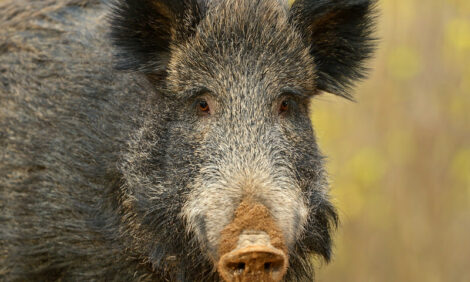



CME: Market Hog Imports Remarkably Stable
US - An alert reader pointed out to us this morning that the year-to-date data in Friday’s Production and Price Summary was out of date, write Steve Meyer and Len Steiner in their DLR for 28 September. Our bad for neglecting to update it.The correct data for all four species are shown in the table below.
| CORRECTED YEAR-TO-DATE DATA Week Ending 9/27/2009 |
|||
| Units | Quantity | Yr/Yr Pct Change |
|
|---|---|---|---|
| FI Cattle Slaughter | Thous. Head | 24,286 | -4.8% |
| FI Beef Production | Million Lbs. | 18,954 | -3.8% |
| FI Hog Slaughter | Thous. Head | 81,914 | -3.2% |
| FI Pork Production | Million Lbs. | 16,602 | -2.0% |
| Young Chicken Slaughter | Thous. Head | 5,832 | -4.4% |
| Chicken Production | Million Lbs. | 23,898 | -4.7% |
| Turkey Slaughter | Thous. Head | 168.1 | -5.1% |
| Turkey Production | Million Lbs. | 3786 | -5.3% |
Beyond domestic hog supplies, the other piece of the US hog and pork supply picture is, of course, imports of pigs from Canada. USDA’s Agricultural Marketing Service publishes data based on weekly tallies of Animal Plant Health Inspection Service border inspection data. The weekly data for 2007 through 2009 and the averages for 2003-2007 appear in the charts below. As can be seen, the numbers of market hogs and feeder pigs coming from Canada are down sharply this year (27 per cent and 71 per cent YTD, respectively) while imports of cull breeding animals are 3.6 per cent higher YTD.



Market hog imports have been remarkably stable at about
10,000 head per week since February. This volume of purchases is
based on long-standing business relationship and contractual agreements.
We expect imports to remain at this level for the foreseeable
future provided the Canadian suppliers remain viable.
Feeder pig imports have generally trended downward at
the same rate as last year but at a level about 30,000 per week lower
than one year ago. As Canada’s breeding herd continues to shrink
(Stats Canada’s 1 October inventory report will be release in mid-
October), we expect this number to continue to fall at about the
same rate that is has declined since March. That rate, though, depends
on the specifics of Canada’s federal sow buyout program that
was announced in August but whose specifics are not yet known.
That same program will also almost certainly decrease
imports of Canadian cull sows — just as last year’s buyout did from
July through September. Any reduction will boost sow prices n the
US and provide more slaughter plant capacity for US sows, thus
impacting the rate of US sow herd reductions.
Please see page 2 of the link below for a Special Executive Report from
CME Group regarding Live Cattle Delivery Procedures.
Further Reading
| - | You can view the full report by clicking here. |








